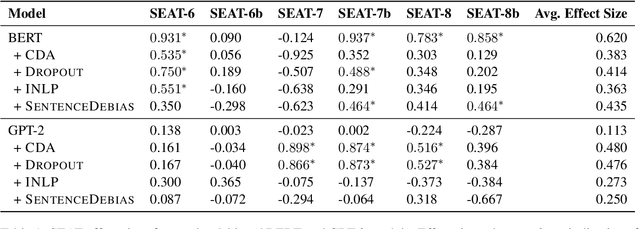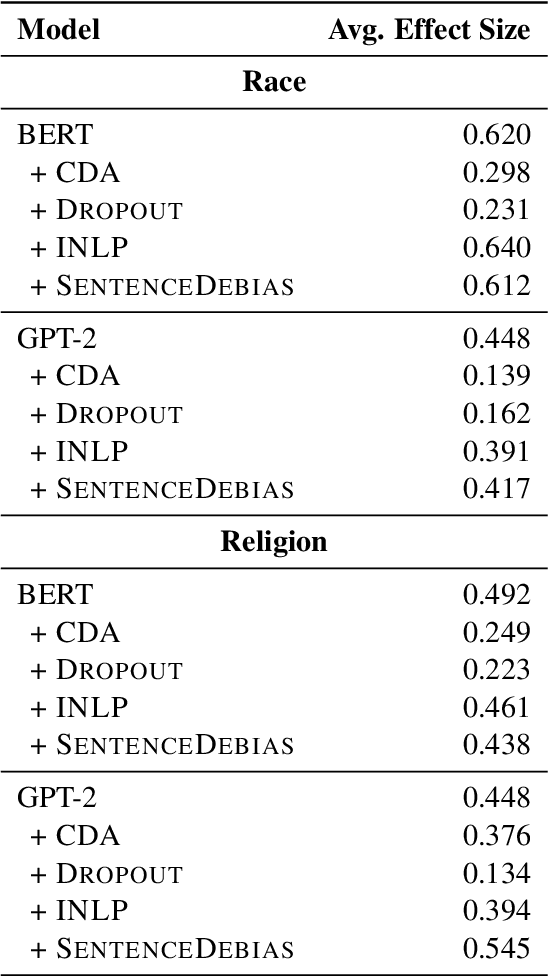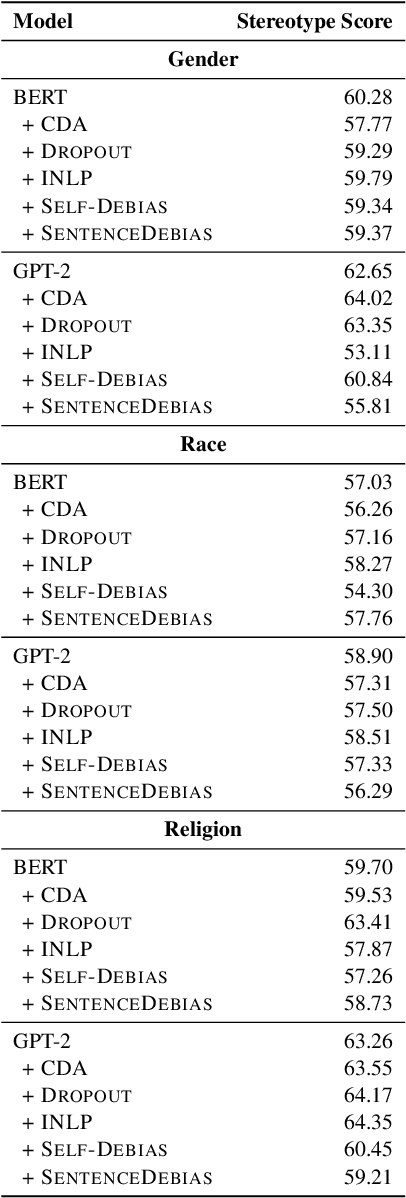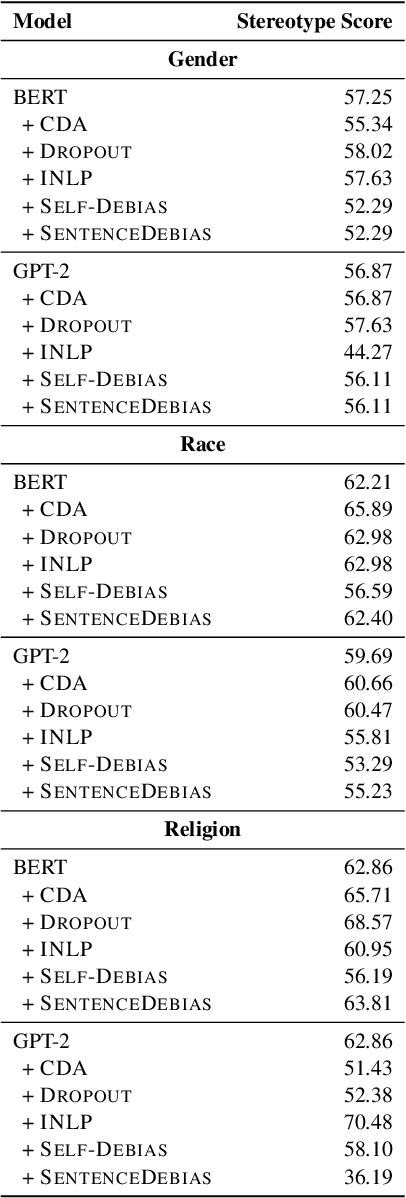An Empirical Survey of the Effectiveness of Debiasing Techniques for Pre-Trained Language Models
Paper and Code
Oct 16, 2021



Recent work has shown that pre-trained language models capture social biases from the text corpora they are trained on. This has attracted attention to developing techniques that mitigate such biases. In this work, we perform a empirical survey of five recently proposed debiasing techniques: Counterfactual Data Augmentation (CDA), Dropout, Iterative Nullspace Projection, Self-Debias, and SentenceDebias. We quantify the effectiveness of each technique using three different bias benchmarks while also measuring the impact of these techniques on a model's language modeling ability, as well as its performance on downstream NLU tasks. We experimentally find that: (1) CDA and Self-Debias are the strongest of the debiasing techniques, obtaining improved scores on most of the bias benchmarks (2) Current debiasing techniques do not generalize well beyond gender bias; And (3) improvements on bias benchmarks such as StereoSet and CrowS-Pairs by using debiasing strategies are usually accompanied by a decrease in language modeling ability, making it difficult to determine whether the bias mitigation is effective.
 Add to Chrome
Add to Chrome Add to Firefox
Add to Firefox Add to Edge
Add to Edge